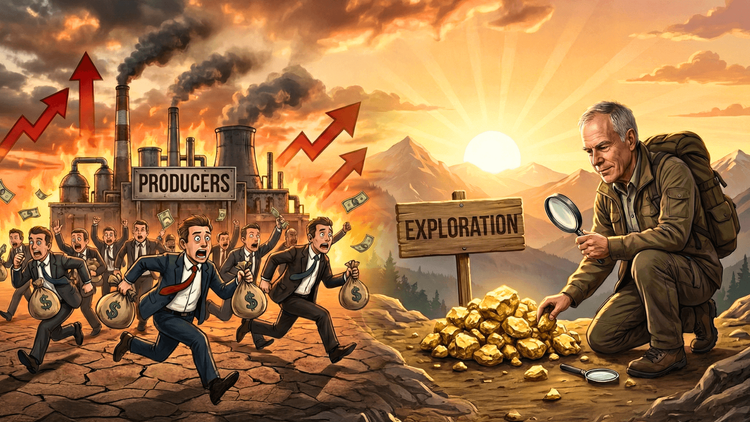Turbulence Tactics: How JPMorgan’s Strategy Beats Volatility and Uncertainty
JPMorgan Chase smashes Wall Street expectations with a $14.6B profit surge—while CEO Jamie Dimon raises a red flag on inflation, geopolitics, and looming economic turbulence.

JPMorgan Chase kicked off the earnings season with a bang, beating Wall Street’s top and bottom-line expectations as the largest U.S. bank posted yet another blockbuster quarter. On Friday, the financial titan reported first-quarter earnings of $5.07 per share on $46.01 billion in revenue, trouncing analyst forecasts and reaffirming its dominance on Wall Street. The performance was bolstered by surging equity trading activity, record asset management fees, and a sharp uptick in investment banking, particularly as market volatility played into the bank’s strengths. Equities trading alone delivered a 48% surge in revenue, bringing in $3.8 billion—nearly $560 million more than expected. That’s not just a beat; that’s a statement.
But even amid champagne-worthy numbers, JPMorgan CEO Jamie Dimon didn’t uncork the bottle. Instead, he stepped to the podium with tempered optimism, delivering a sobering message about what lies ahead. “The economy is facing considerable turbulence,” Dimon said, citing everything from geopolitical tensions and stubborn inflation to soaring fiscal deficits and unpredictable asset prices. He acknowledged the upside from tax reform and deregulation, but stressed that these could be easily outweighed by the negatives—tariffs, trade wars, and a global economic climate that remains choppy at best.
This wasn’t just cautious rhetoric; it was a calibrated warning from the country’s most influential banker. Dimon’s view matters, not just because JPMorgan touches virtually every sector of the economy, but because he’s built a reputation for speaking plainly in a world of jargon. His comments arrive just days after President Donald Trump reignited global trade tensions, triggering a spike in market volatility and a noticeable chill across IPO markets and M&A activity. And yet, that same chaos created a profitable backdrop for JPMorgan’s trading desks—proving once again that Wall Street often thrives when Main Street squirms.
Despite a 9% rise in quarterly profit to $14.64 billion, Dimon urged investors and policymakers alike to stay vigilant. “As always, we hope for the best but prepare the Firm for a wide range of scenarios,” he said, underscoring a disciplined approach that has helped JPMorgan weather past storms, from financial crises to pandemic-era disruptions. Analysts were quick to note the contrast: a bank printing billions in profit, while its CEO outlines a playbook for economic uncertainty.
The numbers don’t lie. Stripping out a one-time gain from its acquisition of First Republic, JPMorgan still earned $4.91 per share—easily surpassing the LSEG estimate of $4.61. Revenue jumped 8% year-over-year, thanks to strength across nearly all business segments. The bank’s stock popped 3% on the results, outpacing the broader market and drawing favorable comparisons to Morgan Stanley and Wells Fargo, both of which also posted stronger-than-expected results Friday.
Still, not everything was sunny in JPMorgan’s world. Dimon acknowledged that the uncertain environment is weighing on certain parts of the business. IPO listings remain sluggish. Mergers are fewer and farther between. Corporate clients are sitting on the sidelines, waiting for more clarity before pulling the trigger on big deals. It’s the kind of macroeconomic paralysis that, while uncomfortable, opens the door for trading desks to feast on volatility. And feast they did.
The broader takeaway? JPMorgan is playing both sides of the market with expert precision. It’s banking on America’s resilience, but hedging its bets in case the turbulence turns into a storm. That duality—booming short-term profits and cautious long-term outlook—is now the blueprint for big banks navigating an increasingly uncertain global economy.
With Goldman Sachs, Bank of America, and Citigroup all set to report earnings next week, the spotlight now shifts to how the rest of the financial giants are reading the room. Will they echo Dimon’s forecast of turbulence? Or will they paint a rosier picture in the face of political and economic crosswinds? One thing’s clear: JPMorgan isn’t just surviving the volatility—it’s profiting from it. And that’s the Dimon difference.
Conclusion
JPMorgan Chase once again proved why it remains the undisputed heavyweight of global finance. While others tread water, it navigates stormy seas with record profits and unrivaled agility. But behind the stellar quarter lies a deeper truth: the global economy is far from stable, and the road ahead is riddled with risk. Jamie Dimon’s message is unmistakable—celebrate the wins, but brace for the unknown. Because in this era of uncertainty, only the most prepared will prevail.






